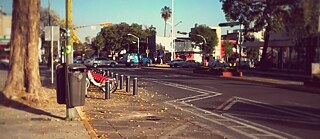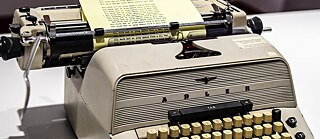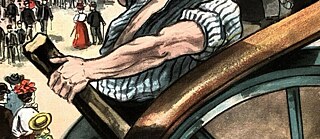The Absence of Others
Guadalajara, a Limited City
This text summarizes five essential concepts for understanding the urban limitation of Guadalajara during a time like the pandemic: proxemics, silence, roaming, boredom, and absurdity. Based on these concepts, the idea of a deadlock — a phantasmagorically decelerated time — becomes central to the city.
The city of Guadalajara is multifaceted and chaotic; it is the political capital of Jalisco and a transitory city for migrants. An entrance and exit — with certain probability — the only hope for people who are nomads, roaming out of necessity, moving from south to west and from west to north to improve their living conditions. A limited city hurtling towards population decline, simultaneously a metropolis of no one and everyone, segmented and fragmented, a city divided by walls and imaginary frontiers. A city committed to myth and reality. A limited city that is two cities at once: Eastern Guadalajara with a dreamy and pristine past and Western Guadalajara, where capital accumulates.
The urban modifications carried out in the city during the last century allow for the use of motorized vehicles, the car as a means of transportation. Roads extended for motorists but reduced for pedestrians, passersby, and cyclists. At the end of the 20th century, borders and obstacles were established throughout the city. A reduction of spaces for social interaction, relations, and articulations. The sidewalk shrinks or disappears entirely. Room for liberation or roaming, the impeded sidewalk is a depoliticized zone. When the sidewalk disappears, so does the possibility of walking or strolling, of interaction, conversation, criticism, and deviating from ideas based on dialogue and discussion. Here, we experience a perception of space that is altered by reduction and limitation, the experience undergoes urban and architectural change. The pedestrian experience is put to the test by the velocity of the urban and architectural changes: limited space and limited city. In the words of Edward T. Hall (1972: 222-231), the proxemics of these places of transit clearly reveals the experience of pedestrians, strollers, or passersby in limited, narrowed spaces furnished with obstacles. From this perspective, sensory perception presents the possibility of resistance based on understanding but also the probability that the space will be politicized if it is not criticized as a phenomenon.
In 21st-century Guadalajara, the chaos and destruction of the year 1992 no longer prevail. The city is historical because of its architecture and urban features but without context. As if the city temporarily surrendered in these moments to later forget them entirely: a moment, then oblivion. Somehow, the pandemic permitted the streets, plazas, and sidewalks to be empty: quiet dead areas. Between distance and absence, travelers had stillness at their disposal, the pleasure of boredom. Phantasmagorical spaces where the echo of a voice resounds between architecture and asymmetrical urban facades; the silence is bewildering yet the phantasmagory of those spaces is void of fear. Perhaps the best way to describe this moment is as a poetic allegory in which solitude and stillness return to the mystery of the beginning and the end: of life and death. Once again, we find ourselves in those spaces of everyday life. Without voices, without noise or sound, silence accompanies the absence of others. Finally, the silence in public spaces depicts the possibility of recognizing oneself as an individual and social being in the city; it is an escape from the pandemic fear — through silence.
Associative strategies made the boredom of the pandemic bearable: Closeness through social networks, roaming the streets, parks, or avenues, and interaction with others — friends, acquaintances, or family. Ephemeral tribal connections formed out of a resistance to confinement. During the months of the pandemic, a vague idea of absurdity was born on the streets, between the presence and absence of people. The spaces were only inhabited by statues, a phantasmagorical presence that revealed the human necessity to roam, to walk, to be a wanderer in public spaces and places.
The urban modifications carried out in the city during the last century allow for the use of motorized vehicles, the car as a means of transportation. Roads extended for motorists but reduced for pedestrians, passersby, and cyclists. At the end of the 20th century, borders and obstacles were established throughout the city. A reduction of spaces for social interaction, relations, and articulations. The sidewalk shrinks or disappears entirely. Room for liberation or roaming, the impeded sidewalk is a depoliticized zone. When the sidewalk disappears, so does the possibility of walking or strolling, of interaction, conversation, criticism, and deviating from ideas based on dialogue and discussion. Here, we experience a perception of space that is altered by reduction and limitation, the experience undergoes urban and architectural change. The pedestrian experience is put to the test by the velocity of the urban and architectural changes: limited space and limited city. In the words of Edward T. Hall (1972: 222-231), the proxemics of these places of transit clearly reveals the experience of pedestrians, strollers, or passersby in limited, narrowed spaces furnished with obstacles. From this perspective, sensory perception presents the possibility of resistance based on understanding but also the probability that the space will be politicized if it is not criticized as a phenomenon.
A Year of Phantasmagorical Spaces
In 2020, the pandemic brought about a u-turn in the social dynamics of public and private spaces in the city. Sensory perception changed during that time. Public spaces were lonely places: empty streets, parks without people, sidewalks without pedestrians or passersby. Since the onset of the pandemic, people’s presence in public spaces was almost nonexistent. Without the experience of those spaces, the probability of social interaction declined, as walking around, having conversations, or riding a bike were improbable. The year 2020 was a year of phantasmagorical spaces. The prospect of going outside was accompanied by the absence of others. There were no proxemic spaces as a consequence of the temporary dissolution of everyday social interactions and sensory experiences. With the pandemic, a distance was established to minimize the risk of infection; it was necessary to implement modified, formalized, and official proxemics due to the health implications. The city surrendered to the shrinking proxemic spaces from pre-pandemic everyday life and the growing distance in public spaces for societal exchange.In 21st-century Guadalajara, the chaos and destruction of the year 1992 no longer prevail. The city is historical because of its architecture and urban features but without context. As if the city temporarily surrendered in these moments to later forget them entirely: a moment, then oblivion. Somehow, the pandemic permitted the streets, plazas, and sidewalks to be empty: quiet dead areas. Between distance and absence, travelers had stillness at their disposal, the pleasure of boredom. Phantasmagorical spaces where the echo of a voice resounds between architecture and asymmetrical urban facades; the silence is bewildering yet the phantasmagory of those spaces is void of fear. Perhaps the best way to describe this moment is as a poetic allegory in which solitude and stillness return to the mystery of the beginning and the end: of life and death. Once again, we find ourselves in those spaces of everyday life. Without voices, without noise or sound, silence accompanies the absence of others. Finally, the silence in public spaces depicts the possibility of recognizing oneself as an individual and social being in the city; it is an escape from the pandemic fear — through silence.
A Way to Resist the Confinement
The depreciation of roaming reflects the desperate reaction to alternative forms of identity in a society transitioning from modern to postmodern. Everything that is not stable and does not stand still is discarded as a wistful, anarchist possibility. A limitation on roaming indicates the gradual disappearance of pedestrian areas. Walking is not only an action but also a vehicle for reflection. Pondering has declined since the advent of the motor. Maybe the effects of the pandemic brought about moments of roaming as in Maffesoli’s understanding (2004: 15), nomadism via the streets, pedestrian walkways, and parks.Associative strategies made the boredom of the pandemic bearable: Closeness through social networks, roaming the streets, parks, or avenues, and interaction with others — friends, acquaintances, or family. Ephemeral tribal connections formed out of a resistance to confinement. During the months of the pandemic, a vague idea of absurdity was born on the streets, between the presence and absence of people. The spaces were only inhabited by statues, a phantasmagorical presence that revealed the human necessity to roam, to walk, to be a wanderer in public spaces and places.






